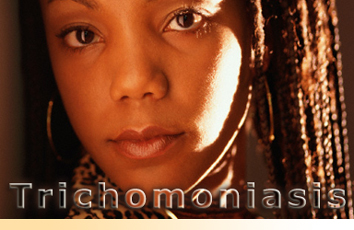|
|||||||||||||||

|
|||||||||||||||
|
|
|||||||||||||||
Sexually
Transmitted Diseases > Trichomoniasis > Trichomoniasis Fact
Sheet
Trichomoniasis - CDC Fact Sheet 
Trichomoniasis is a common sexually transmitted disease (STD) that affects both women and men, although symptoms are more common in women. Trichomoniasis is the most common curable STD in young, sexually active women. An estimated 7.4 million new cases occur each year in women and men. Trichomoniasis is caused by the single-celled protozoan parasite, Trichomonas
vaginalis. The vagina is the most common site of infection
in women, and the urethra (urine canal) is the most common site
of infection in men. Most men with trichomoniasis do not have signs or symptoms; however, some men may temporarily have an irritation inside the penis, mild discharge, or slight burning after urination or ejaculation. Some women have signs or symptoms of infection which include a frothy, yellow-green vaginal discharge with a strong odor. The infection also may cause discomfort during intercourse and urination, as well as irritation and itching of the female genital area. In rare cases, lower abdominal pain can occur. Symptoms usually appear in women within 5 to 28 days of exposure. The genital inflammation caused by trichomoniasis can increase a woman’s susceptibility to HIV infection if she is exposed to the virus. Having trichomoniasis may increase the chance that an HIV-infected woman passes HIV to her sex partner(s). Pregnant women with trichomoniasis may have babies who are born early or with low birth weight (low birth weight is less than 5.5 pounds). For both men and women, a health care provider must perform a physical examination and laboratory test to diagnose trichomoniasis. The parasite is harder to detect in men than in women. In women, a pelvic examination can reveal small red ulcerations (sores) on the vaginal wall or cervix. Trichomoniasis can usually be cured with prescription drugs, either metronidazole or tinidazole, given by mouth in a single dose. The symptoms of trichomoniasis in infected men may disappear within a few weeks without treatment. However, an infected man, even a man who has never had symptoms or whose symptoms have stopped, can continue to infect or re-infect a female partner until he has been treated. Therefore, both partners should be treated at the same time to eliminate the parasite. Persons being treated for trichomoniasis should avoid sex until they and their sex partners complete treatment and have no symptoms. Metronidazole can be used by pregnant women. Having trichomoniasis once does not protect a person from getting it again. Following successful treatment, people can still be susceptible to re-infection. The surest way to avoid transmission of sexually transmitted diseases is to abstain from sexual contact, or to be in a long-term mutually monogamous relationship with a partner who has been tested and is known to be uninfected. Latex male condoms, when used consistently and correctly, can reduce the risk of transmission of trichomoniasis. Any genital symptom such as discharge or burning during urination or an unusual sore or rash should be a signal to stop having sex and to consult a health care provider immediately. A person diagnosed with trichomoniasis (or any other STD) should receive treatment and should notify all recent sex partners so that they can see a health care provider and be treated. This reduces the risk that the sex partners will develop complications from trichomoniasis and reduces the risk that the person with trichomoniasis will become re-infected. Sex should be stopped until the person with trichomoniasis and all of his or her recent partners complete treatment for trichomoniasis and have no symptoms. Division of STD Prevention (DSTDP) Order Publication Online at www.cdc.gov/std/pubs CDC-INFO Contact Center Resources: CDC National Prevention Information Network (NPIN) American Social Health Association (ASHA) Sources Centers for Disease Control and Prevention. Sexually transmitted diseases treatment guidelines 2006. MMWR 2006: 55 (No. RR-11) Krieger JN and Alderete JF. Trichomonas vaginalis and trichomoniasis. In: K. Holmes, P. Markh, P. Sparling et al (eds). Sexually Transmitted Diseases, 3rd Edition. New York: McGraw-Hill, 1999, 587-604. Weinstock H, Berman S, Cates W. Sexually transmitted disease among American youth: Incidence and prevalence estimates, 2000. Perspectives on Sexual and Reproductive Health 2004; 36: 6-10. Page last modified: December 19, 2007 Page last reviewed: December 17, 2007 Content Source: Division of STD Prevention, National Center for HIV/AIDS, Viral Hepatitis, STD, and TB Prevention Disclaimer: Links to non-Federal organizations found at this site are provided solely as a service to our users. These links do not constitute an endorsement of these organizations or their programs by CDC or the Federal Government, and none should be inferred. The CDC is not responsible for the content of the individual organization web pages found at these links. |
|||||||||||||||
|
|||||||||||||||